Delhi Sight Seeings Attractions
Delhi offers myriad opportunities in terms of travel. It is indeed rich in projecting wonderful destinations to the travelers coming from around the world. In fact, Delhi is the hub where all tourists gather or begin their journey to the rest of India. That is what makes it more fascinating and worthwhile. Apart from that, it is worth traveling and experiencing.
Well, if you are on Delhi Sightseeing Tour, you are bound to experience the rich variety of sightseeing in its vicinities. In fact, if there’s one place on earth where you could get everything, it’s Delhi.
Top Places to visit in Delhi - Delhi Tourist Attractions
1. Red Fort, Delhi
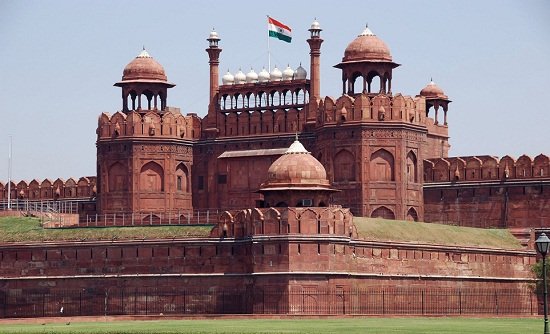 Built by the Mughal Emperor, Red Fort was built by Shah Jahan between 1638 and 1648. Undoubtedly, the place is an exorbitant piece of Mughal architecture. The entry to this magnificent piece of land is Lahori Gate running through Purana Qila. 'Meena Bazaar' market in the Purana Qila graces it. Excellent assemblage of antiques, miniature paintings and skillfully crafted fake ivory jewelery is what graces this plae further.
Built by the Mughal Emperor, Red Fort was built by Shah Jahan between 1638 and 1648. Undoubtedly, the place is an exorbitant piece of Mughal architecture. The entry to this magnificent piece of land is Lahori Gate running through Purana Qila. 'Meena Bazaar' market in the Purana Qila graces it. Excellent assemblage of antiques, miniature paintings and skillfully crafted fake ivory jewelery is what graces this plae further.
Red Fort is laid outalong the river Yamuna as an irregular octagon , surrounded by a wall of about 2.4 km in circumference and is built of red sandstone. The Mughal king Shah Jahan transfered the capital from Agra to Delhi and the Fort was completed in 1648. The fort has two main entrances , the Delhi Gate and the Lahori Gate which faces the famed Chandni Chowk market.The Fort has Diwan-e-am, and Diwan-e-Khas where the king would grant audience to the public and would grant audience to important people respectively.
Besides this is the Rang Mahal, the water cooled Apartment for the royal ladies. In the basement of the fort is a market where traditional Indian goods can be purchased at nominal rates . Another attraction is Light and Sound show held in the evenings.
2. Humayun Tomb
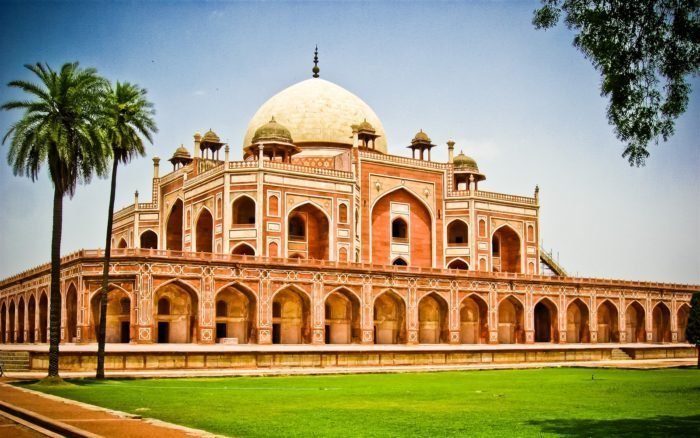
Humanyun Tomb was built in the 16th century. As the tomb represents a typical example of Mughal architecture, it is one of the most beautiful and stunning structures of the world. The exotic tomb is ornamented with geometrical patterns, which makes it highly respectable and irresistible. High arches also make it more worthwhile and significant.
This tomb, which as built by emperor Humanyun's wife, took eight years to complete. The emperor's wife Begai Begum was buried in the tomb and the structure is first of its kind built in the center of a well - planned garden. The combination of white marble and red sand stone was a great influence on later Mughal architecture. It is generally regarded as a prototype of the famed Taj Mahal of Agra.
3. India Gate Delhi
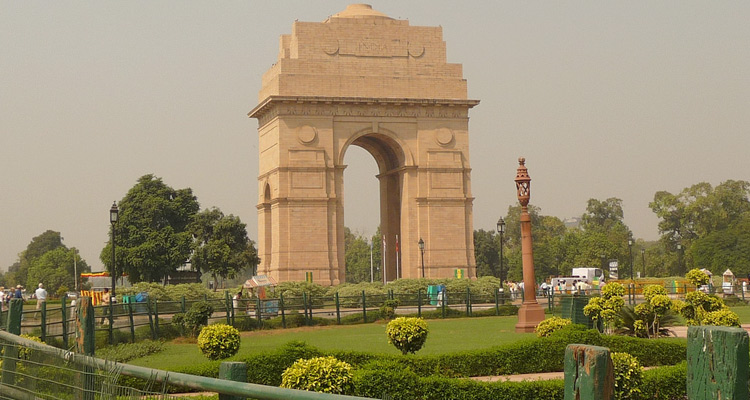 India Gate is a majestic structure with 42 m height standing proudly at Rajpath. What makes it more fascinating is its location against the backdrop of plush green lawns. The monument, which is in the shape of a gate was designed and built by Lutyens in the memory of 90,000 Indian soldiers, who sacrificed their lives in World War I. The main attraction of this wonderful place is the Amar Jawan Jyoti, lit in 1971 to honor the martyrs.
India Gate is a majestic structure with 42 m height standing proudly at Rajpath. What makes it more fascinating is its location against the backdrop of plush green lawns. The monument, which is in the shape of a gate was designed and built by Lutyens in the memory of 90,000 Indian soldiers, who sacrificed their lives in World War I. The main attraction of this wonderful place is the Amar Jawan Jyoti, lit in 1971 to honor the martyrs.
Straight down the road from Rashtrapati Bhavan is India Gate which is primarily a memorial to unknown soldier. Designed by Lutyens , the 42 meter high structure is a war memorial in honour of soldiers who died during the second World War. The structure has an eternal flame (Amar Jawan Jyoti) to honour the memory of the unknown soldiers.
4. Dilli Haat
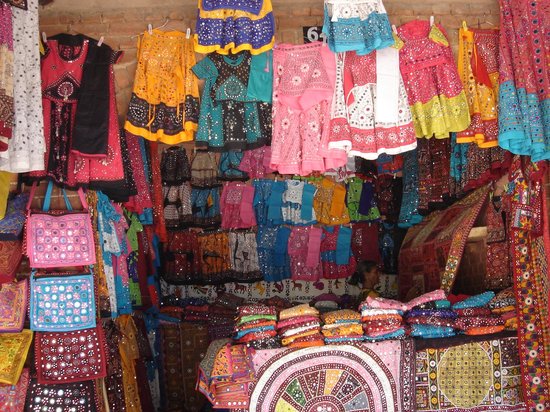 The Dilli Haat, located opposite the INA Market , is a project jointly set up by the New Delhi Municipal Council and Delhi Tourism. All kind of goods made by artisans are displayed at regular intervals during the year. There are also permanent shops reflecting the kind of goods made in various states of the country. Those interested in folk art could find this spot a real entertainer.
The Dilli Haat, located opposite the INA Market , is a project jointly set up by the New Delhi Municipal Council and Delhi Tourism. All kind of goods made by artisans are displayed at regular intervals during the year. There are also permanent shops reflecting the kind of goods made in various states of the country. Those interested in folk art could find this spot a real entertainer.
5. Qutub Minar
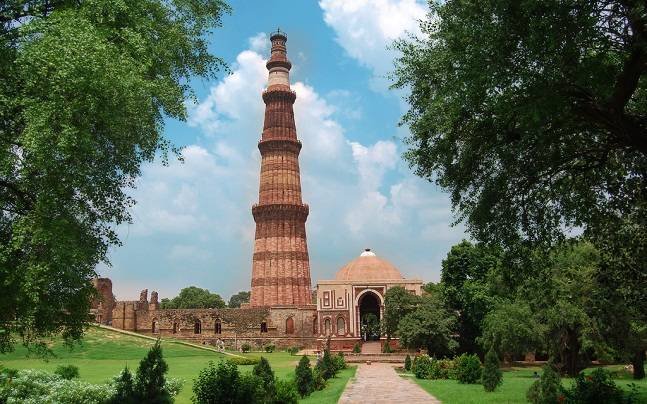 Qutub Minar is the magnificent structure in the southern part of the capital of India was built by a Muslim King , Qutub-ud-din Aibak in 1199 A.D.
Qutub Minar is the magnificent structure in the southern part of the capital of India was built by a Muslim King , Qutub-ud-din Aibak in 1199 A.D.
A part of it which he could not finish was completed by another Muslim King Iltutmish. Minar is 72.5 m high and has as its base a mosque.
In front of the imposing structer is an Iron Pillar believed to have been built in the 5th century A.D. which has not caught rust ever since it was built.
6. Lotus Temple
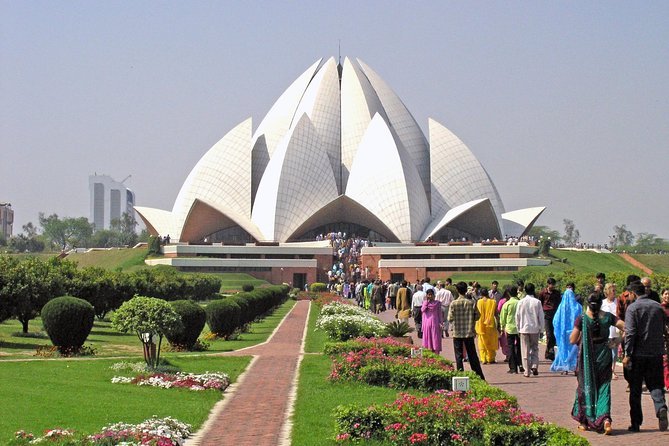 The ruins of this fort are located on a small hill which once stood on the bank of the river Yamuna.Legend has it that the fort marked the site of Indraprastha ,the magnificent capital of the Pandavas, though the construction was carried out by Sher Shah Suri any time between 1538 to 1545 A. D. The structure houses a mosque which has a double storeyed octagonal tower. It is said that the Mughal King Humayun fell from the tower accidently and died. At the foot of the hill is the lake where the Delhi Tourism has arrangements for boating and also organises a Sound and Light Show.
The ruins of this fort are located on a small hill which once stood on the bank of the river Yamuna.Legend has it that the fort marked the site of Indraprastha ,the magnificent capital of the Pandavas, though the construction was carried out by Sher Shah Suri any time between 1538 to 1545 A. D. The structure houses a mosque which has a double storeyed octagonal tower. It is said that the Mughal King Humayun fell from the tower accidently and died. At the foot of the hill is the lake where the Delhi Tourism has arrangements for boating and also organises a Sound and Light Show.
7. Jantar Mantar
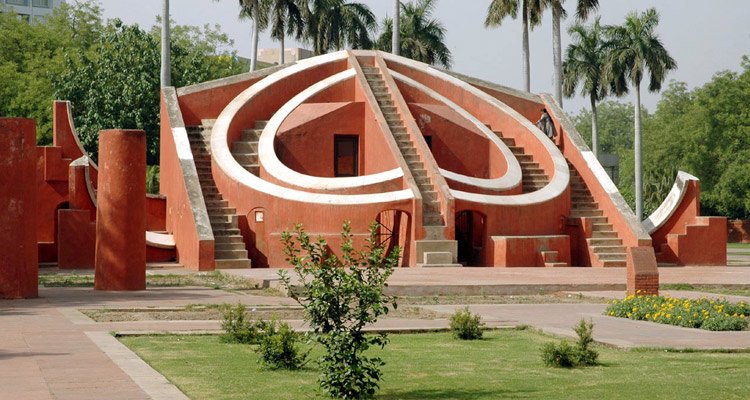 Within the Connaught Place are is the Jantar Mantar observatory built by the Rajput King of Jaipur, Sawai Jai Singh in 1724. It was believed to have been built with masonary instruments for observing the movements of the stars and the planets.
Within the Connaught Place are is the Jantar Mantar observatory built by the Rajput King of Jaipur, Sawai Jai Singh in 1724. It was believed to have been built with masonary instruments for observing the movements of the stars and the planets.
8. Rashtrapati Bhavan
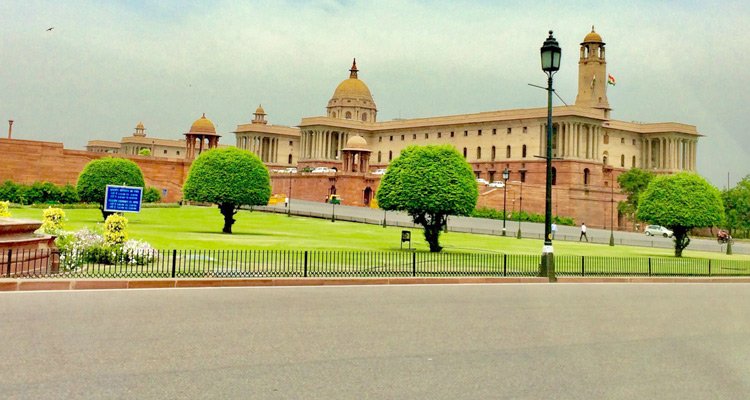 A stone throw away from Parliament House is the Rashtrapati Bhavan which is the official residence of the President of the country. Designed by the Lutyens , it was the official residence of the Viceroy when the British ruled India. With 340 rooms and an area of about 350 acres . The pillars and the porticos are an architect's marvel. Although special permission has to be obtained to visit the complex, the Mughal Gardens within the complex are atreat for the eyes and are open to the public during certain periods of year.
A stone throw away from Parliament House is the Rashtrapati Bhavan which is the official residence of the President of the country. Designed by the Lutyens , it was the official residence of the Viceroy when the British ruled India. With 340 rooms and an area of about 350 acres . The pillars and the porticos are an architect's marvel. Although special permission has to be obtained to visit the complex, the Mughal Gardens within the complex are atreat for the eyes and are open to the public during certain periods of year.
9. National Zoological Park
 The Delhi Zoo, close to Purana Qila , near ITO , was established in 1959 and is spread over an area of 214 acres. It is regarded as one of the finest zoo in Asia and efforts have been made to provide an almost natural habitat to the animals and birds. There are more than 2,000 animals and birds species from places like Africa, America, Australia and even Asia. There is a lot of greenery around the zoo and it is an ideal picnic spot especially in winters.
The Delhi Zoo, close to Purana Qila , near ITO , was established in 1959 and is spread over an area of 214 acres. It is regarded as one of the finest zoo in Asia and efforts have been made to provide an almost natural habitat to the animals and birds. There are more than 2,000 animals and birds species from places like Africa, America, Australia and even Asia. There is a lot of greenery around the zoo and it is an ideal picnic spot especially in winters.
10. Lodhi's Garden
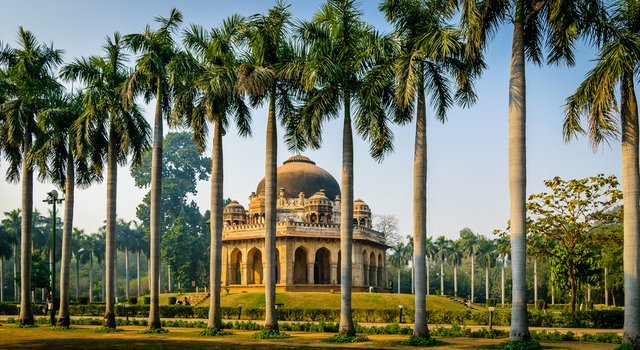 The tombs are in the midst of the famed Lodhi's Gardens and is believed to have been built by rulers of two Dynasties, the Sayyaids and the Lodhi's . History has it that the tombs are remainants of another city that was sought to be built in Delhi.
The tombs are in the midst of the famed Lodhi's Gardens and is believed to have been built by rulers of two Dynasties, the Sayyaids and the Lodhi's . History has it that the tombs are remainants of another city that was sought to be built in Delhi.
11. Chandni Chowk
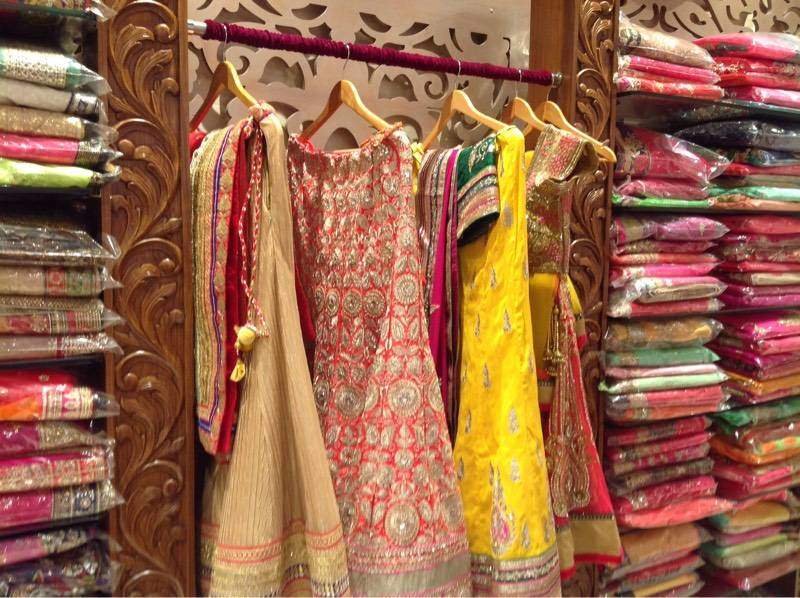 It was the eyes and the ears of the Mughal's commercial instincts and is today one of the country's best known wholesale markets for textiles , electronic goods and watches. The entire arc was designed by Jahanara Begum, Shah Jahan's favourite daughter and was the inhabited by the well to do famlies of the time.
It was the eyes and the ears of the Mughal's commercial instincts and is today one of the country's best known wholesale markets for textiles , electronic goods and watches. The entire arc was designed by Jahanara Begum, Shah Jahan's favourite daughter and was the inhabited by the well to do famlies of the time.
12. Jama Masjid
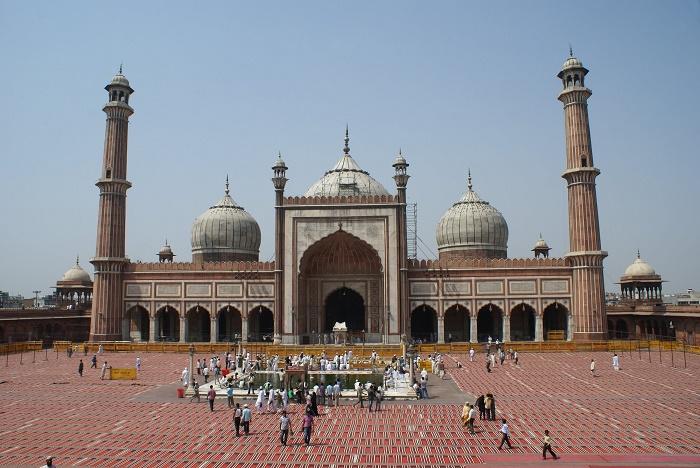 Shah Jahan, as his final architectural extravagance, built one of the largest mosques in India, Jama Masjid. It is situated in Old Delhi area of the capital. Also known as Masjid-i-Jahan Numa, it was the principal mosque of the Emperor. Owing to its huge size, it took six years to be fully complete. Situated on a high platform, the austere, yet beautiful, building was built in red sandstone, with extensive use of white marble. The pulpit of Jama Masjid has been beautifully carved out of a single block of marble. It has three gateways, four soaring towers and two minarets. The 130-ft high slender minarets of the mosque grace its impressive façade.
Shah Jahan, as his final architectural extravagance, built one of the largest mosques in India, Jama Masjid. It is situated in Old Delhi area of the capital. Also known as Masjid-i-Jahan Numa, it was the principal mosque of the Emperor. Owing to its huge size, it took six years to be fully complete. Situated on a high platform, the austere, yet beautiful, building was built in red sandstone, with extensive use of white marble. The pulpit of Jama Masjid has been beautifully carved out of a single block of marble. It has three gateways, four soaring towers and two minarets. The 130-ft high slender minarets of the mosque grace its impressive façade.
13. Safdarjung Tomb
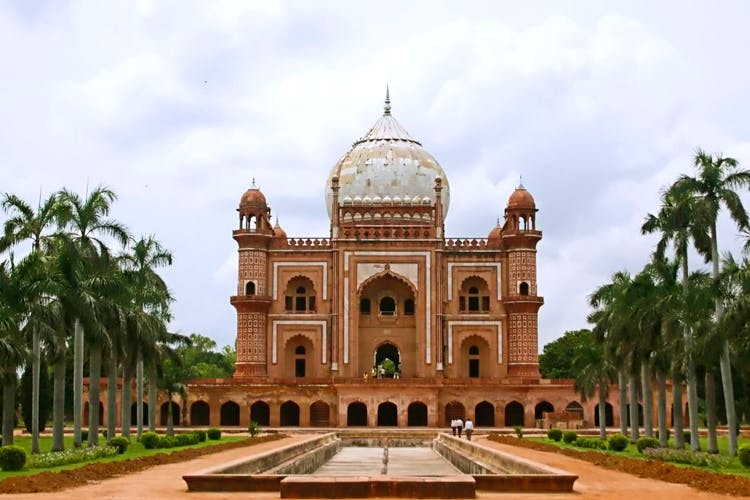 The garden tomb was built in 1753-54 soon after Safdarjung died. It is a red and a brown sandstone with double storeyed towers in the corners and is one of the last example of Mughal architecture.
The garden tomb was built in 1753-54 soon after Safdarjung died. It is a red and a brown sandstone with double storeyed towers in the corners and is one of the last example of Mughal architecture.
14. Birla Mandir
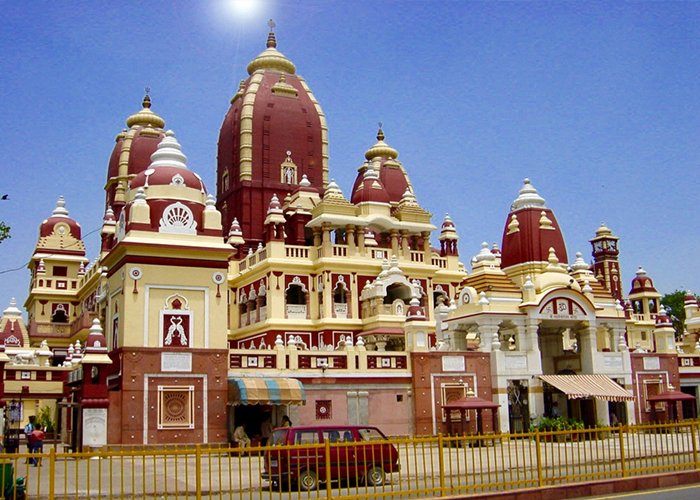 Close to Connaught Place, it was built by the industrialist Raja Baldev Birla in 1938. The temple is an important prayer site and contains idols of several deities . Interestingly Mahatama Gandhi who inaugurated the temple was also a regular visitor to it and would often pray there.
Close to Connaught Place, it was built by the industrialist Raja Baldev Birla in 1938. The temple is an important prayer site and contains idols of several deities . Interestingly Mahatama Gandhi who inaugurated the temple was also a regular visitor to it and would often pray there.
15. Memorials Of National Leaders
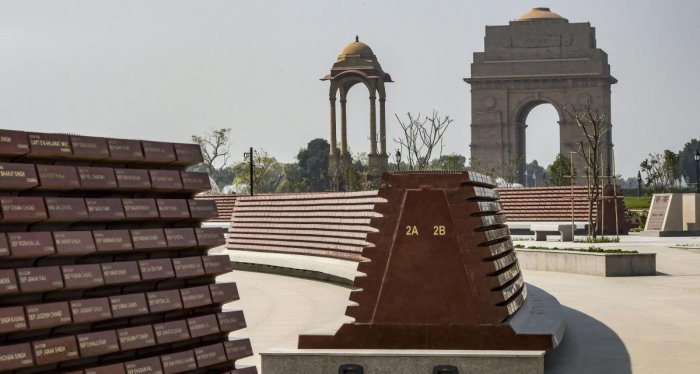 On the banks of the river Yamuna are the National Shrines . Raj Ghat (Mahatma Gandhi) , Shanti Vana (Jawaharlal Nehru), Vijay Ghat(Lal Bhadur Shastri), Shakti Sthal (Indira Gandhi), Vir Bhumi (Rajiv Gandhi).
On the banks of the river Yamuna are the National Shrines . Raj Ghat (Mahatma Gandhi) , Shanti Vana (Jawaharlal Nehru), Vijay Ghat(Lal Bhadur Shastri), Shakti Sthal (Indira Gandhi), Vir Bhumi (Rajiv Gandhi).

